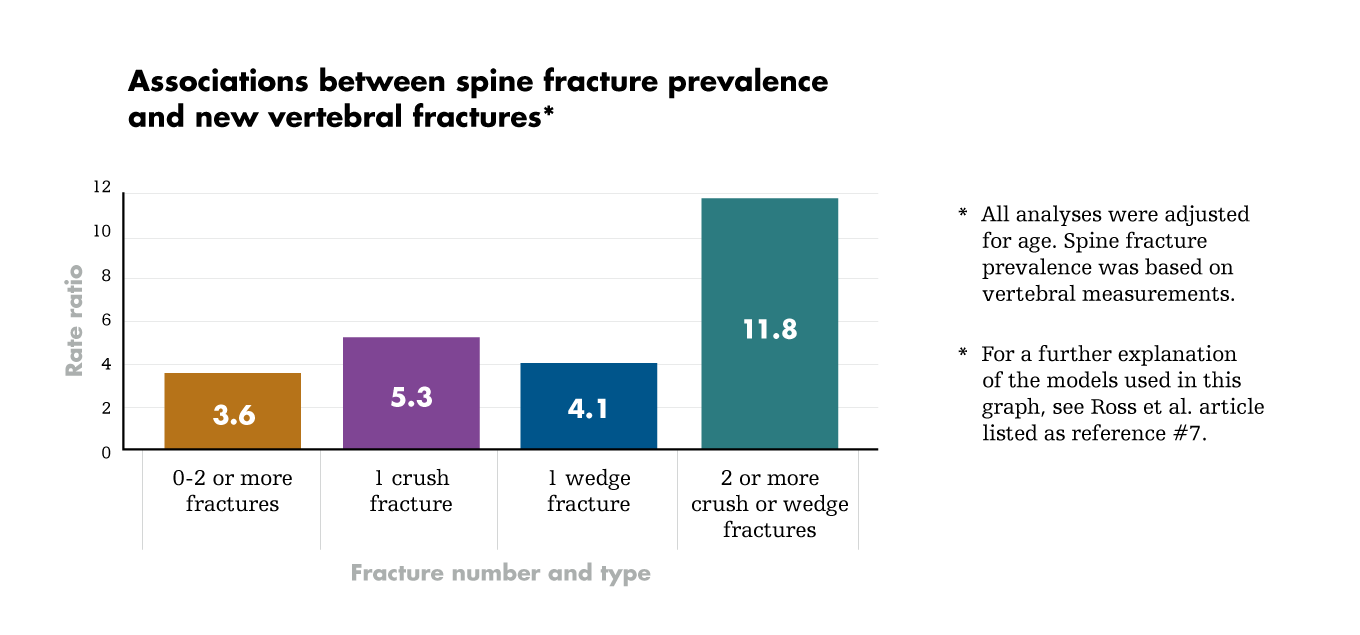
Vertebral compression fractures
Treating spinal fractures can save lives
A study of over 2 million Medicare vertebral compression fracture (VCF) patients showed that only 15 patients need to be treated with vertebral augmentation in order to save a life at one year compared to nonsurgical management.3
VCFs are the most common fractures in patients with osteoporosis, which affect more than 750,000 U.S. adults each year.4 This can lead to:
A VCF increases the risk of a subsequent fracture
The risk of subsequent fractures increases in patients with a history of osteoporotic VCFs. Additional VCFs can lead to progressive kyphosis of the thoracic spine, which further results in comorbidities such as poor nutrition and decreased pulmonary function.5 When no surgical intervention is performed, the data suggests that the incidence of subsequent VCFs is 19%.7 Both bone mass and existing vertebral fractures are powerful predictors of the risk for new vertebral fractures. The risk for new vertebral fractures increases progressively, going from zero to one to two or more prevalent fractures.8

Life expectancy impact
A study of over 850,000 Medicare VCF patients predicted that median life expectancy was 2.2 to 7.3 years greater for patients treated with vertebral augmentation versus patients treated with conservative care.9
An issue that’s often ignored
Approximately two-thirds of VCFs go undiagnosed and untreated.1 When patients come looking for answers, finding an existing painful VCF is critical.

